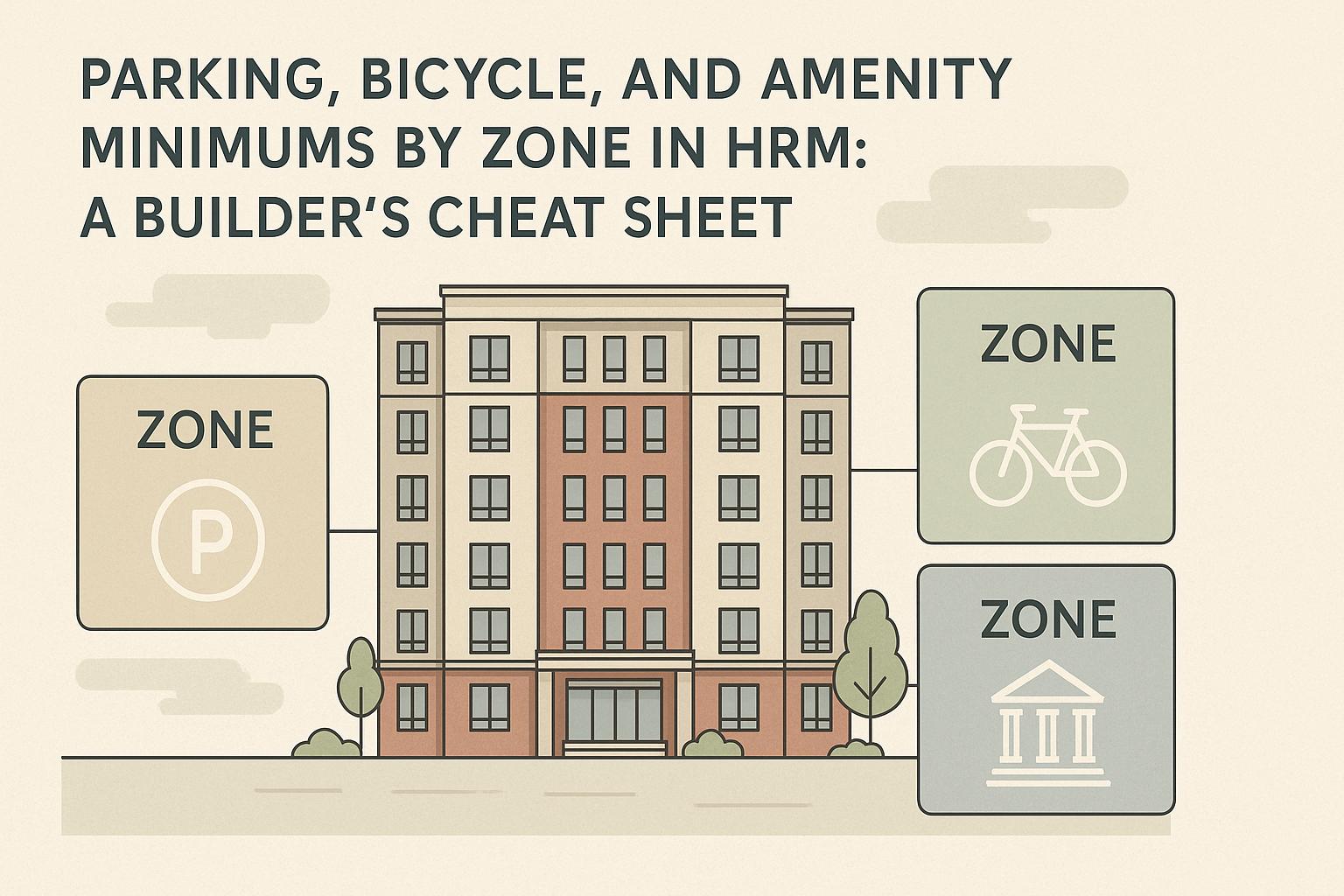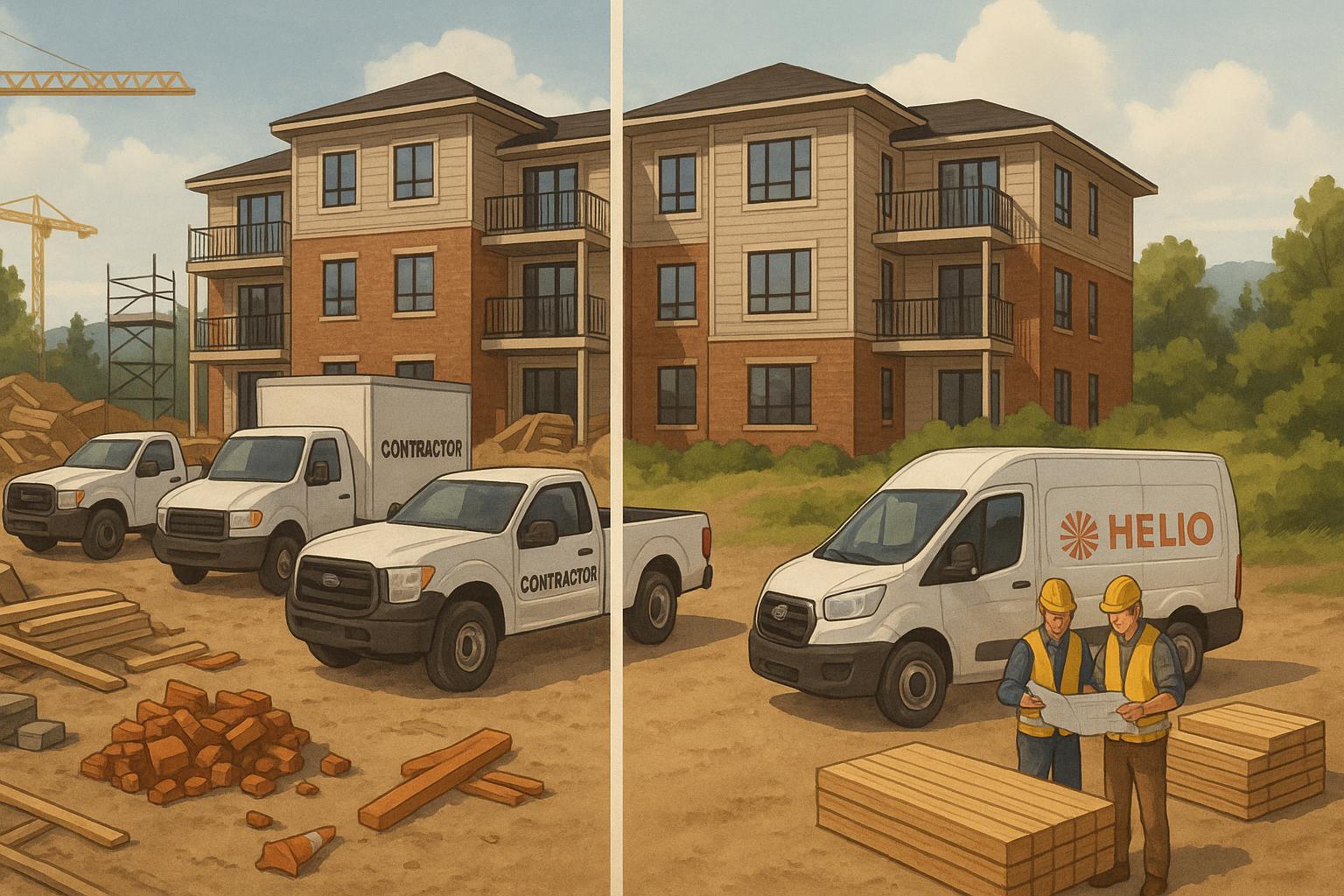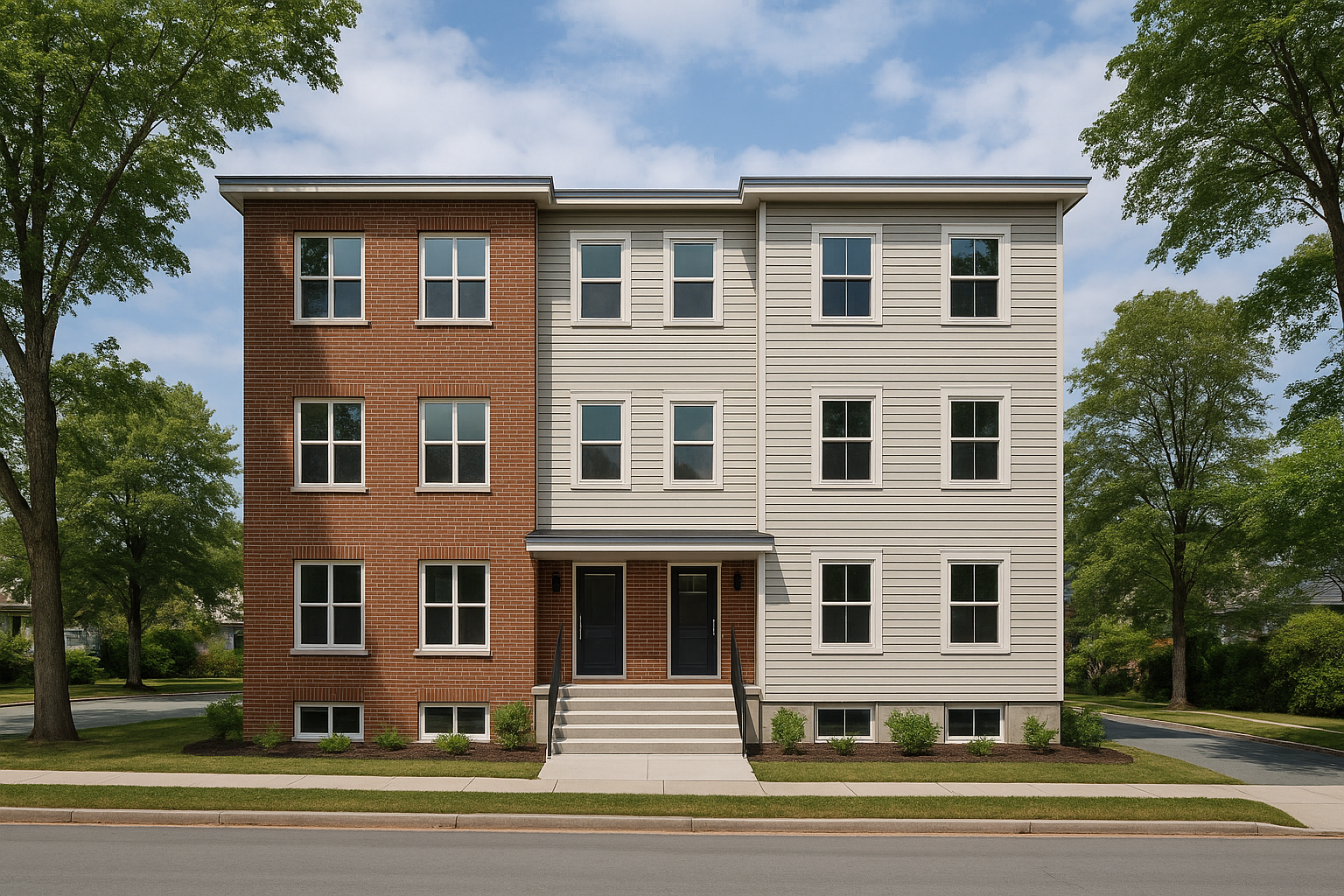In Nova Scotia, adding a backyard suite or carriage house to your property can provide extra rental income, house family members, or boost property value. These detached units are independent homes with separate entrances, utilities, and living spaces. While they offer flexibility in design and functionality, building them involves navigating zoning rules, permits, and construction costs. Here's what you need to know:
- Cost: Construction ranges from $160,000 to $200,000, with additional expenses for utilities and landscaping.
- Rental Income: Expect $1,950 to $2,100/month for a two-bedroom unit, with potential annual returns of 12-20%.
- Zoning: Rules vary by municipality, with Halifax Regional Municipality (HRM) having specific requirements for lot size and setbacks.
- Permits: Building codes require compliance with safety standards, and recent updates emphasize modular construction and energy efficiency.
- Financing: Programs like the Secondary and Backyard Suite Incentive Program and CMHC MLI Select financing can help manage costs.
Planning, design, and construction must align with local regulations to ensure a smooth process. Partnering with experienced builders can simplify the journey and help you maximize the benefits of adding a secondary unit to your property.
What To Consider Before Building Backyard Suites In Halifax
Zoning and Regulatory Requirements
Zoning rules in Nova Scotia differ depending on the municipality. For example, Halifax Regional Municipality (HRM) allows these units under specific conditions related to lot size, setbacks, and coverage. It's essential to check the local guidelines for your area to ensure compliance.
Where Backyard and Carriage Houses Are Permitted
Within a 90-minute drive of Halifax, many municipalities, including HRM, allow secondary units, provided that requirements for lot size, setbacks, and coverage are met. Since these criteria vary between municipalities, it's best to consult your local planning department for detailed information. In some areas, approvals are granted automatically if standards are met, while others require a conditional approval process that might extend your timeline. Once zoning is sorted, it's time to look into the building codes that govern these projects.
Building Code and Safety Requirements
After confirming your location is suitable, the next step is understanding safety standards. Nova Scotia's building codes lay out the necessary rules to ensure detached secondary units are both safe and functional. In HRM, for instance, a Water Permit is required for secondary suites located within the municipal wastewater boundary [1].
Provincially, accessory buildings under 20 square metres are generally exempt from requiring a building permit. However, individual municipalities may have stricter bylaws, so it's crucial to check with local authorities to ensure full compliance with safety and infrastructure requirements [2].
Recent Regulatory Changes
Nova Scotia has recently updated its Building Code with several amendments aimed at modernizing construction practices. For instance, N.S. Reg. 198/2024, which takes effect on April 1, 2025, and N.S. Reg. 133/2025, effective August 1, 2025, highlight advancements in construction methods. Additional updates are planned for April 2026, 2027, and 2029 [2].
These changes place greater emphasis on modular and prefabricated construction, aiming to improve efficiency and speed up housing development while reducing trade barriers between provinces [3]. Manufactured homes and modular buildings are now recognized as compliant with the Code if they meet CSA standard A277 and are properly labelled [2].
The updated regulations also introduce formal definitions for "tiny houses" (units measuring 37 square metres or less) and "recreational cabins" within Part 9 of the National Building Code [2]. Building officials now have broader authority to coordinate approvals across different regulatory bodies. They can also withhold permits until projects meet all requirements under the Heritage Property Act and the Municipal Government Act [2]. These updates aim to simplify the approval process and reduce unnecessary delays.
Design and Construction Planning
Once zoning and safety standards are met, the next step is careful planning. This phase is crucial for a smooth project and helps reduce potential coordination issues down the line.
Start by making the most of your property’s layout, balancing functionality with privacy.
Site Planning and Layout
Take a close look at local setback and access regulations to determine the best placement for your secondary unit. This ensures not only everyday convenience but also accessibility in case of emergencies. Good site planning can maintain a seamless connection between your main home and the secondary unit while addressing practical needs like parking, waste collection, and deliveries. Even a small outdoor area, such as a private patio or garden, can make the unit more inviting and comfortable for occupants.
Design Requirements and Privacy
Local size and layout standards will play a role in shaping your unit’s design. To make the space more functional and appealing, focus on details like bedroom layouts, window positioning, and soundproofing. For example, placing windows thoughtfully can preserve privacy between the main house and the secondary unit. Meanwhile, quality insulation reduces noise transfer, creating a more peaceful living environment for everyone.
Once your design priorities are clear, it’s time to decide on a construction approach.
Construction Models: Fragmented vs. Integrated Design-Build
In a fragmented model, you’ll need to coordinate multiple professionals - architects, engineers, permit specialists, and contractors. This can lead to miscommunication and unclear accountability, making the process more challenging.
An integrated design-build model, on the other hand, brings all these services under a single provider. This approach simplifies the process by consolidating tasks like permits, surveys, engineering, and excavation. Several local companies illustrate the benefits of this method:
"We understand that navigating the approval process with Halifax Regional Municipality can be complex, which is why we take care of all the necessary permits, surveys, engineering, and excavation. This means you can enjoy a hassle-free experience as we deliver a turn-key unit tailored just for you." - Wheelhouse [4]
Similarly, Sprout Dwellings highlights their comprehensive service, noting they "handle it all" from permits to construction for backyard suites [5].
sbb-itb-16b8a48
Costs and Return on Investment
Once you have your design and construction plans ready, it’s time to evaluate the financial side of things. Knowing the costs and potential returns can help you decide whether adding a secondary unit to your Nova Scotia property is worth the investment. With careful planning, these projects can yield strong financial benefits.
Construction Cost Estimates
Building a backyard suite or carriage house in Nova Scotia typically costs between CAD $160,000 and CAD $200,000 per unit. A standard unit at the lower end of this range - around CAD $160,000 - might include features like ductless heat pumps, triple-pane windows, quartz countertops, engineered hardwood flooring, and custom millwork. For those willing to spend closer to CAD $200,000, you can achieve up to 40% greater energy efficiency compared to standard code requirements. This higher efficiency could make the unit eligible for CMHC MLI Select financing.
Don’t forget to account for additional expenses like site preparation, utility hookups, and landscaping. To save on furnishing and finishing touches, you can opt for a Premium Rental Ready Package (approximately CAD $15,000), which offers a savings of around CAD $3,000 compared to purchasing these items separately.
Financing Options and Government Programs
Nova Scotia offers several financial incentives to make secondary units more accessible. For example, the Secondary and Backyard Suite Incentive Program provides forgivable loans for building secondary suites on your primary residence. To qualify for loan forgiveness, the suite must be rented to eligible tenants, such as a low-income individual, a family member, or someone paying below-market rent. Homeowners must live on the property, ensure municipal taxes are up to date, and complete the project within nine months. Upfront financing is also required[6].
Another option is CMHC MLI Select financing, which offers attractive terms like up to 95% financing, a 5% down payment, and a 50-year amortization period. This program allows for leverage ratios as high as 20:1, making it easier to finance your project. However, the previously announced Canada Secondary Suite Loan Program, which was supposed to provide low-interest loans of up to CAD $80,000, has yet to be implemented[7].
By combining these financing options, you can better manage costs and improve your return on investment. A well-thought-out approach can also help ensure smoother execution and more predictable outcomes.
Rental Income and ROI Calculations
A two-bedroom secondary unit in Nova Scotia can generate rental income ranging from CAD $1,950 to CAD $2,100 per month. If you purchase the unit outright with cash, you could see annual returns between 12% and 20%. For those using financing, cash flow can improve significantly thanks to leverage, though the exact numbers will depend on your financing terms and debt obligations.
Beyond rental income, adding a secondary unit often increases the overall value of your property, contributing to long-term equity growth. This combination of monthly income and property appreciation makes secondary units a compelling investment for many homeowners.
Step-by-Step Construction Process
Building a backyard suite or carriage house involves several key stages, each playing a vital role in the overall success of your project. Knowing what to expect at each step can help you stay on track, avoid unnecessary delays, and manage costs effectively.
Planning and Permit Process
The journey starts with a feasibility assessment of your property. This involves checking whether your lot meets key requirements, such as setbacks, available space for the secondary unit, and the ability to connect to utilities. Municipalities often enforce rules about minimum lot sizes and specific distances from property lines, existing structures, and septic systems.
Once you’ve confirmed feasibility, the next step is securing permits. In Nova Scotia, this means submitting detailed architectural plans, engineering drawings, and site plans to your local municipality. Depending on where you live and how complex your project is, this process can take anywhere from 4 to 12 weeks.
If you’re part of the Secondary and Backyard Suite Incentive Program, keep in mind that your project must be completed within 9 months of receiving program approval [6]. This tight timeline makes it essential to plan carefully and avoid unnecessary delays.
Fragmented coordination can slow down the permit process, but an integrated design-build approach can simplify things, helping you get approvals faster. Once you have your permits in hand, it’s a good time to revisit your overall timeline to ensure everything stays on schedule.
Construction Timelines and Delivery Guarantees
Using traditional construction methods, backyard suites and carriage houses in Nova Scotia typically take 12 to 18 months to complete. This extended timeline is often due to challenges like coordinating multiple contractors, weather-related delays, material shortages, and accountability issues.
An integrated design-build approach, however, can dramatically reduce this timeline, sometimes completing projects in as little as 6 months - guaranteed. These builders manage all trades under one umbrella and use advanced scheduling systems to avoid common delays. Many even back their timelines with financial guarantees, offering penalties of up to CAD $1,000 per day if they miss their promised completion date.
Experienced builders also take Nova Scotia’s climate into account, planning critical exterior work during favourable weather to keep the project moving smoothly.
Quality Control and Inspections
Timely delivery is important, but quality control is equally critical to protect your investment. In backyard suite construction, quality assurance involves multiple inspections to ensure compliance with the Nova Scotia Building Code Act and Regulations, which follow the National Building Code standards. Inspections typically occur at major milestones: foundation, framing, electrical rough-in, plumbing rough-in, insulation, and the final stage.
While municipal building inspectors check for code compliance, their role doesn’t extend to overall quality assurance. That’s why many property owners arrange for additional inspections, either by hiring independent professionals or working with builders who offer enhanced quality checks.
The most thorough quality control involves triple verification: internal checks by the builder, five separate inspections by a Professional Engineer (P.Eng), and a final review by an independent professional of your choice. This layered approach helps catch and resolve issues early, saving you from costly repairs down the line.
Daily photo updates provide added transparency, helping you monitor progress and spot potential problems before they escalate.
Warranty coverage also varies by builder. Standard warranties often cover major structural elements for one year, but some builders offer 2-year warranties that include both materials and workmanship. Longer warranties reflect greater confidence in the construction and give property owners added peace of mind.
Establishing clear quality standards upfront and maintaining consistent oversight throughout the project is essential. Skipping these steps can lead to expensive fixes later, cutting into the rental income you’re relying on to make your investment worthwhile.
Conclusion: Adding Value with Secondary Units
Adding a backyard suite or carriage house to your Nova Scotia property offers financial, practical, and lifestyle advantages that go well beyond just earning rental income. These secondary units are a smart way to maximize your property's potential while also contributing to the province's growing housing needs.
From a financial standpoint, the appeal is clear. With several government programs available to help reduce costs, combined with thoughtful construction decisions, these units can enhance your property's long-term value.
On the practical side, secondary units are an excellent solution for multigenerational living. Whether you're accommodating aging parents or providing a space for adult children, these units balance independence with proximity, supported by initiatives aimed at family housing needs.
Looking at the big picture, secondary units increase your property's marketability and overall worth. They offer flexibility as your family's needs evolve, create additional income opportunities, and position your property as a sought-after asset in Nova Scotia's real estate market.
Of course, achieving these benefits requires careful planning. Navigating zoning laws, perfecting the design, and ensuring top-notch construction are critical. The key to success lies in partnering with experienced builders who specialize in secondary unit construction. The right professionals will handle municipal regulations, ensure quality through multiple inspections, and deliver a project that aligns with your expectations - on time and within budget.
When done right, these units not only enhance your property's value but also provide a steady income stream, making them a smart investment for the future.
FAQs
What do I need to know about zoning and permits to build a backyard suite or carriage house in Nova Scotia?
To construct a backyard suite or carriage house in Nova Scotia, you’ll need a few essential documents: a building permit, a site plan, detailed construction drawings, and structural specifications. The application process is handled by your local municipality, such as Halifax, where submissions can be made through their online portal.
There are some key requirements to keep in mind. For instance, your lot must be at least 325 m² in size, and setback distances will depend on the specific regulations in your area. Permit fees for secondary suites typically run around $4,000, though it’s always a good idea to confirm exact costs with your municipality. Also, make sure to check local zoning rules, as some areas may have restrictions or limits on the number of units you can add to your property.
What are the financing options and government programs available to help build a secondary unit on my property in Nova Scotia?
If you're considering adding a secondary unit to your property in Nova Scotia, there are some helpful financing options and government programs available to ease the financial burden.
One standout option is the Secondary and Backyard Suite Incentive Program. This program provides eligible homeowners with a forgivable loan that can cover up to 50% of the project's costs, capped at $40,000. To qualify, you need to meet a few conditions: the property must be your primary residence, your property taxes must be up to date, and you must be able to pay for construction costs upfront. If you continue living on the property and rent the unit to a low-to-moderate-income household or a family member aged 65 or older, the loan is forgiven after five years.
For those in the Halifax Regional Municipality, there's an additional option: the Second Unit Incentive Program (SUIP). This program offers non-repayable grants to cover Halifax Water Regional Development Charges and costs related to water and wastewater installations.
These programs can provide the financial support you need to create a secondary unit, whether your goal is to house family members or generate rental income.
What are the benefits of choosing an integrated design-build approach for adding a backyard suite in Nova Scotia?
Choosing an integrated design-build approach for your backyard suite can make the construction process much easier by bringing design and building services together under one team. This setup ensures clear communication, minimizes misunderstandings, and keeps project management running smoothly, creating a more efficient experience overall.
With just one team handling everything, you won’t have to juggle multiple contractors and designers. This often means quicker timelines, better control over costs, and a more straightforward path to finishing your project. For property owners in Nova Scotia, this approach is a practical and stress-free option.
Related Blog Posts
- Small Multi-Unit Development 101: Building Duplexes and Fourplexes in Nova Scotia
- Secondary Suites and Backyard Homes in Halifax: Adding Value with New Housing Options
- Multigenerational Living in Nova Scotia: Designing a Custom Home for Your Whole Family
- Secondary Suites in Nova Scotia: Adding Income and Space to Your Home



